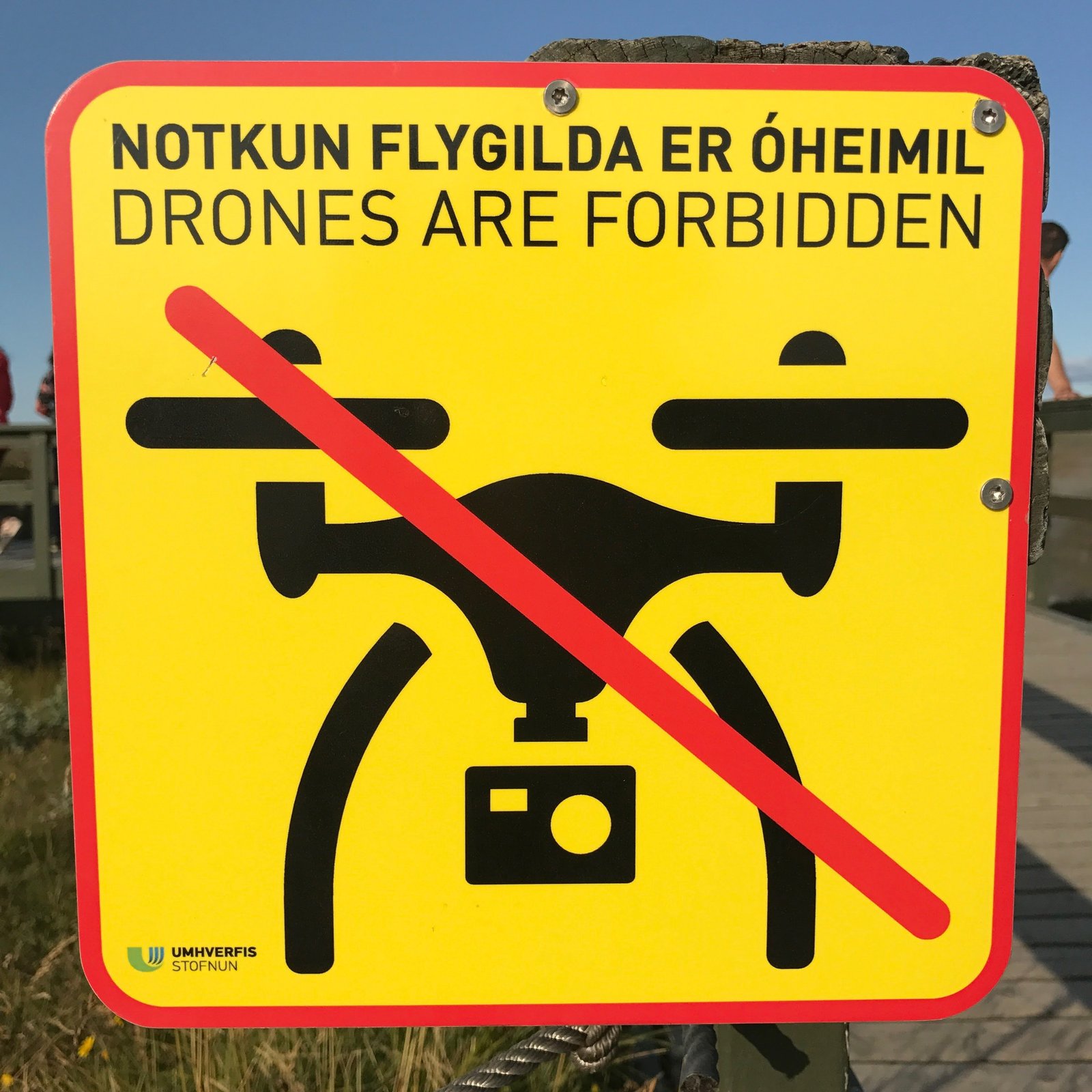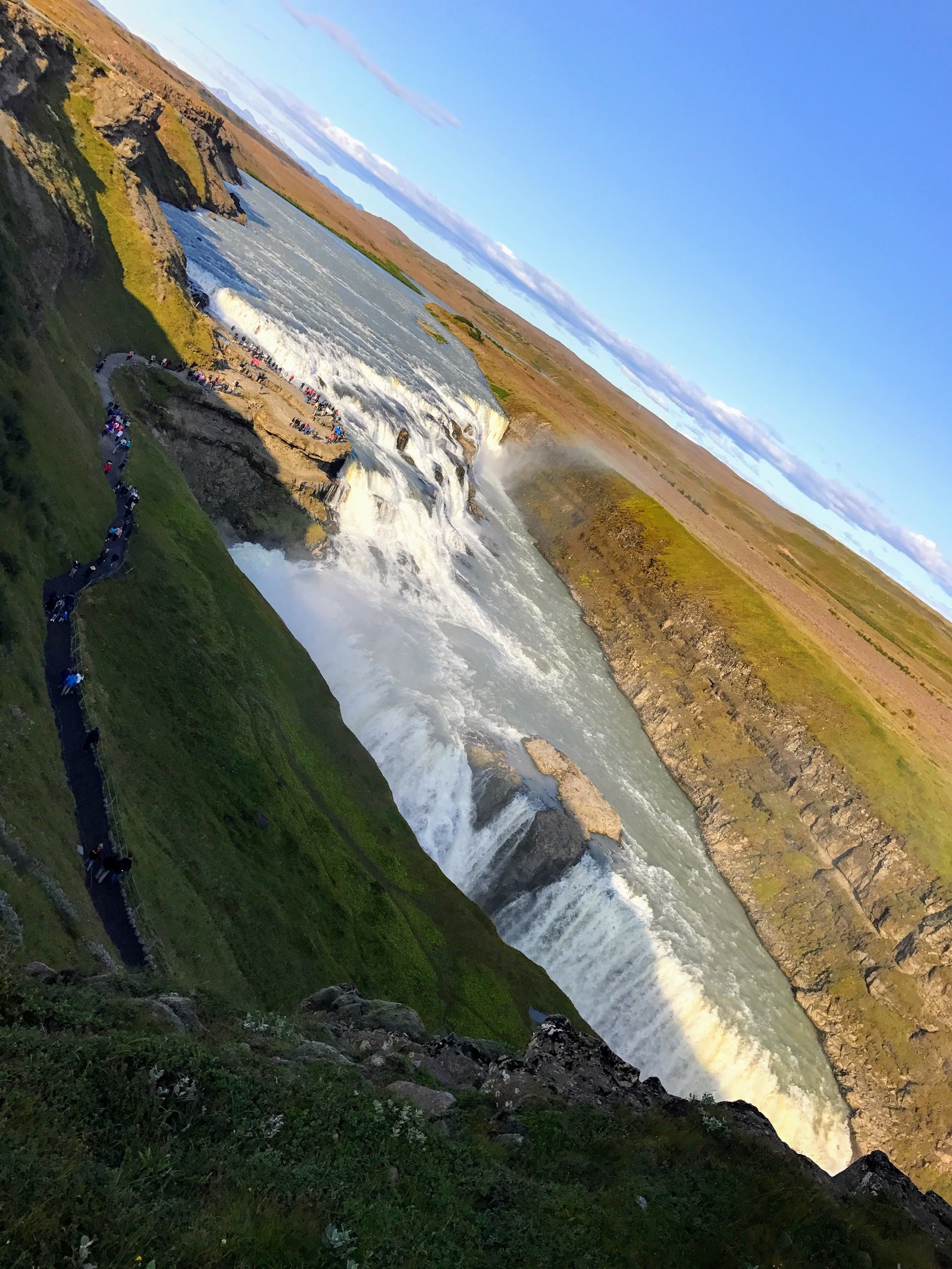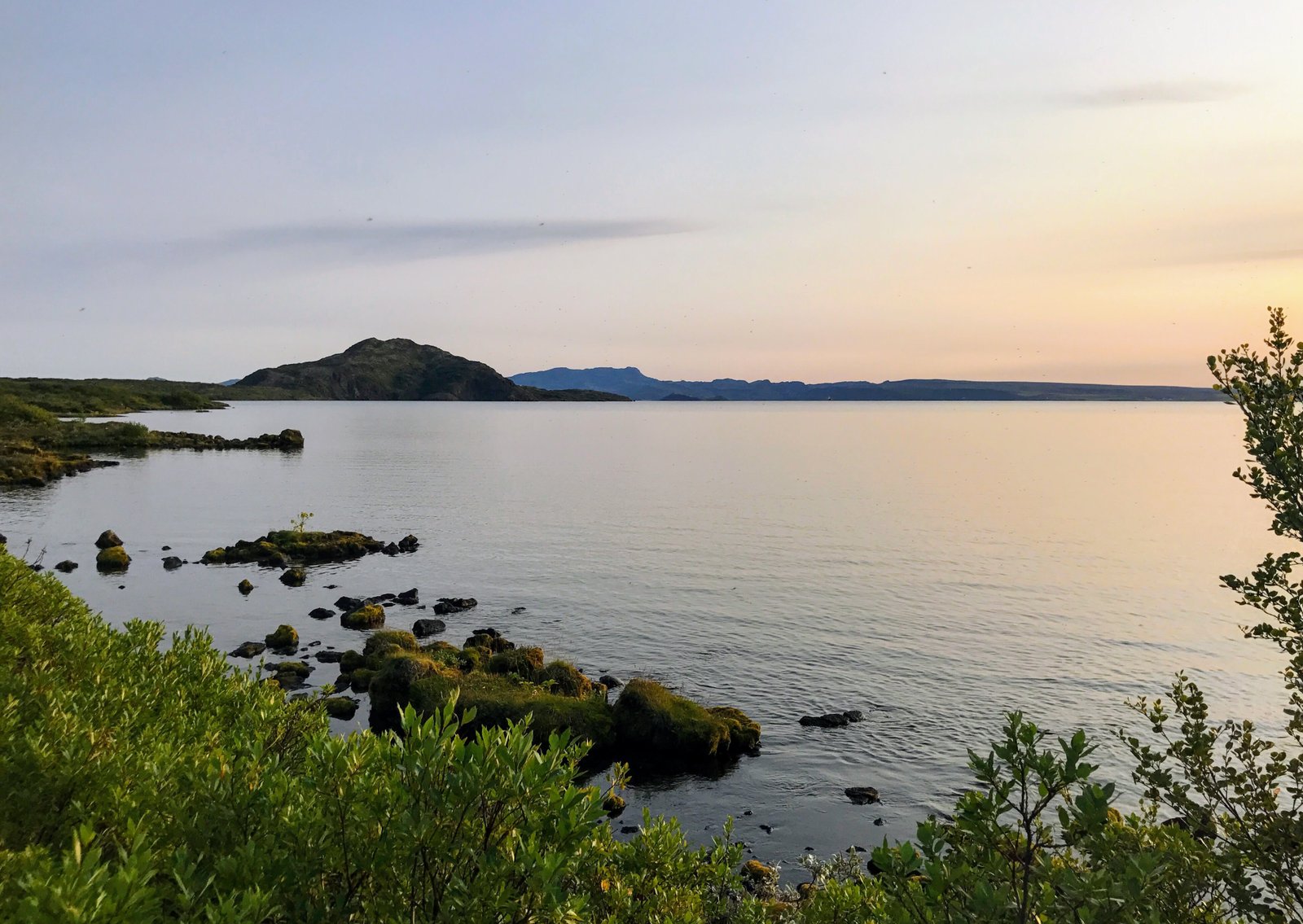So, back to Iceland. Because when I think of it in my head now, it’s this idyllic place that belongs somewhere alongside halfway remembered books I read as a child and have always wanted to find again. Maybe I need another vacation.
The place we did our photoshoot happened to be near the Golden Circle, which is a route containing some of the main tourist attractions in Iceland, so we decided to pop in and see them, since we were in the neighbourhood.
Stop one on the Golden Circle was a waterfall that stands out even in a country full of spectacular waterfalls. Gulfoss is a gigantic waterfall by any measure, and the gloriously sunny day made it glitter with rainbows.

One of the major attractions in Iceland, this waterfall has viewing platforms from almost every possible angle. On some of them you can stand close enough to get pretty wet in the spray.

From others you can view the entire thing from above. Drones are forbidden at this and other popular Icelandic viewpoints; however, people seem to almost make a sport of clandestinely operating them.

I was pleased I (barely) managed to fit the entire waterfall into my little iPhone frame without the use of a drone.

Like many places in Iceland, this one has a legend attached. Something about a woman who insisted her farm boy lover swim across the river just above the waterfall to prove his love. Reportedly he succeeded. I personally somewhat doubted her love. I would certainly be actively discouraging anyone I cared about from swimming across that river.
Besides the legend, there’s some pretty cool real history attached to Gulfoss, in the form of Sigríður Tómasdóttir, a woman who lived near the waterfall in the late 19th century. When foreign investors decided to “develop” (read: destroy) the waterfall for use in generating electricity, she launched a one-woman campaign to save Gulfoss. She walked the 120 kilometres to Reykjavik on multiple occasions to challenge the plans for development. After a long fight, when all seemed lost, she threatened to throw herself into the waterfall. In the end Gulfoss was saved, and Sigríður became a national hero, her story immortalised by a monument near her beloved waterfall.

Just a few minutes down the road from Gulfoss is Geysir, which is just what it sounds like: a geysir that has reached heights of 170 metres. Earthquakes tend to set it off, and failing that it has also been forced into action by soap injections of dubious environmental impact. Now Geysir is left to erupt or not, without any human intervention. Fortunately, it has a much smaller neighbour called Strokkur, which erupts reliably every eight minutes. We joined a jovial group of tourists ringing Strokkur, and sure enough, it erupted right on schedule. I filmed about three minutes of nothing happening and then gave up. So this is Tony’s video.
Our final stop for the day was in a beautiful national park called Þingvellir. By this time it was getting towards sunset, which glowed silently off the still surface of Þingvallavatn, the largest natural lake in Iceland.

We picked up our first hitchhikers here, a German couple who were camping on the shores of the lake and wanted to see the same thing we did. We ended up at a waterfall that is small for Iceland, but quite pretty.

If you turn around and walk in the other direction, you see this intriguing little canyon. Impressively, this is the edge of the North American tectonic plate. How often do you get to see that above the surface of the ocean?

Contrary to what you might expect, Þingvellir is a national park neither for its natural beauty nor even for this considerable geological distinction. Besides these things, it is also one of the most important historical locations in Iceland: the site where the Icelandic tribes gathered for the Alþing, the parliament they established in 930 C.E. Yes, that makes the Icelandic parliament over 1000 years old; the oldest parliament in the world, in fact. The parliament continued to meet in Þingvellir for several hundred years, until it was moved to Reykjavik in 1844.
We dropped the German hikers back at their campsite and headed home, after a day that could only be described as epic, albeit exhausting; this entire blogpost is just a postscript to the photoshoot we did in the morning.